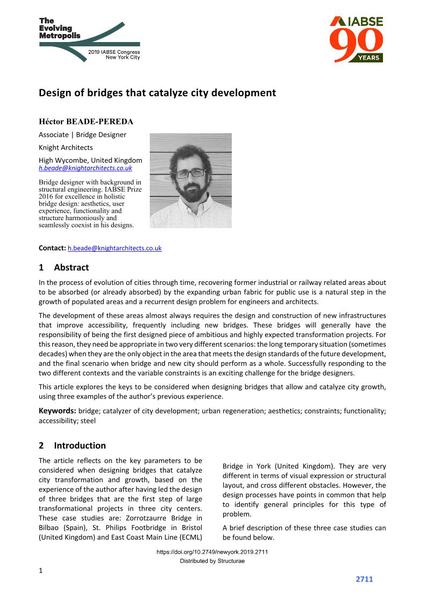Design of bridges that catalyze city development

|
|
|||||||||||
Bibliografische Angaben
| Autor(en): |
Héctor Beade-Pereda
|
||||
|---|---|---|---|---|---|
| Medium: | Tagungsbeitrag | ||||
| Sprache(n): | Englisch | ||||
| Tagung: | IABSE Congress: The Evolving Metropolis, New York, NY, USA, 4-6 September 2019 | ||||
| Veröffentlicht in: | The Evolving Metropolis | ||||
|
|||||
| Seite(n): | 2711-2719 | ||||
| Anzahl der Seiten (im PDF): | 9 | ||||
| DOI: | 10.2749/newyork.2019.2711 | ||||
| Abstrakt: |
In the process of evolution of cities through time, recovering former industrial or railway related areas about to be absorbed (or already absorbed) by the expanding urban fabric for public use is a natural step in the growth of populated areas and a recurrent design problem for engineers and architects. The development of these areas almost always requires the design and construction of new infrastructures that improve accessibility, frequently including new bridges. These bridges will generally have the responsibility of being the first designed piece of ambitious and highly expected transformation projects. For this reason, they need be appropriate in two very different scenarios: the long temporary situation (sometimes decades) when they are the only object in the area that meets the design standards of the future development, and the final scenario when bridge and new city should perform as a whole. Successfully responding to the two different contexts and the variable constraints is an exciting challenge for the bridge designers. This article explores the keys to be considered when designing bridges that allow and catalyze city growth, using three examples of the author’s previous experience. |
||||
| Stichwörter: |
Ästehtik Stahl Brücke
|
||||
